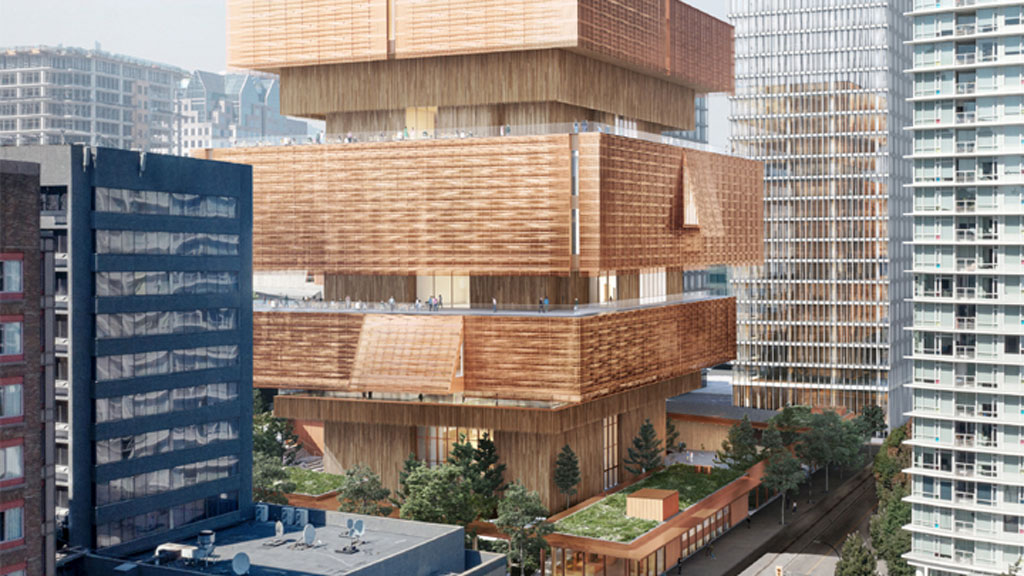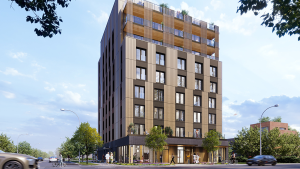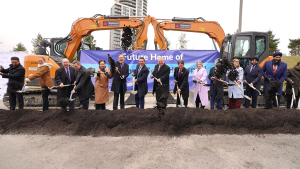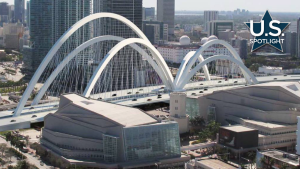Fencing has been erected and heavy equipment is being brought in to start demolition and excavation work at West Georgia and Cambie streets in the heart of a cultural hub in downtown Vancouver.
If all goes according to plan, in fall 2028 the doors to a new, nine-level, purpose-built Vancouver Art Gallery will open, featuring a unique exterior facade that incorporates traditional Coast Salish weaving techniques.
The 300,000-square-foot structure will be substantially larger than the existing gallery on Hornby Street and will have 80,000 square feet of dedicated exhibition and gallery space. It will be a net-zero carbon building.
The new gallery will be adjacent to the Queen Elizabeth Theatre and near the Vancouver Public Library and will border Vancouver’s historic Chinatown and Gastown neighbourhoods.
“I’ve been at the gallery for three-and-a-half years but, of course, the project has been going much longer. In some ways, it feels like we’re just starting now,” says Anthony Kiendl, CEO and executive director of the Vancouver Art Gallery. “There’s so much to be done but it’s an incredibly exciting opportunity.”

Last September, a special ground awakening ceremony was held at the site, a moment that art gallery supporters have been working toward for more than a decade.
Ledcor is the general on the project. The first step is to demolish an existing structure and parking garage and then remediate the site. Over the first few months of work, construction crews will be digging down a level to remove contaminated soil and a retaining wall.
The above-ground work will involve cranes and heavy equipment and will likely start in spring of 2025.
“Construction is supposed to be 48 months from March 5 and then probably a six-month moving process,” says Kiendl. “We’re currently looking at the fall of 2028.”
The stacked structure has been designed by renowned Swiss architects Herzog & de Meuron, the firm perhaps best known for designing the Birds Nest Stadium in Beijing, with executive architect Perkins + Will and in close collaboration with four local Indigenous artists. The building will be an iconic addition to the city’s skyline, honouring a Coast Salish worldview in the very fabric of the façade.
“That’s a key element and it will probably make it the largest expression of Coast Salish world view. It’s unique to this site and this culture and context, so it makes it a very special and singular opportunity,” says Kiendl.
Notable features in the new building will include dedicated space for the Institute of Asian Art, a multi-purpose Indigenous Community House, 265-seat theatre, public outdoor spaces and artist studios. The larger exhibition space will enable more of the gallery’s permanent collection to be presented.
There will also be public dining spaces, dedicated and shared classrooms, year-round exhibitions of Indigenous art from B.C. and around the globe, more public programming space, a library and reading room.
While the gallery is nine levels the structure will look more like a 20-storey tower as each floor has high ceilings, says Kiendl.
The exterior of the building promises to be just as impressive.
“The exterior of the building is a combination of primarily stainless steel, which is perforated and designed as an esthetic element in a weaving pattern honouring the Coast Salish Indigenous weaving tradition,” says Kiendl. “That’s combined with elements of wood cladding primarily in the soffits and some vertical surfaces and at various points.
“We’re still finalizing the interiors, but I would expect they will primarily feature a palette of wood and concrete and, of course, drywall for the interior and so on.”
The design team is aiming to ensure the project optimizes reductions in embodied carbon and is applying for certification as a zero-carbon building from the Canada Green Building Council.
The structure will use locally sourced woods and “green” steel, high-efficiency heat pumps and high-performance, triple-glazed windows and adhere to stringent energy standards. It will have multiple green spaces, including an exterior courtyard and two exterior terraces.
The estimated cost of the project is expected to be released in June. Earlier, the gallery set a goal to reach a campaign goal of $400 million for the venture. More than $345 million has been raised with support from private and corporate partners, the federal and B.C governments and City of Vancouver.
As the project moves into its final fundraising push, the Vancouver Art Gallery has launched a new campaign to engage wider communities, called The Build Up.
The new gallery is expected to create more than 4,000 jobs during construction and ongoing operations and bring in $84 million annually to the local economy. Combined with a new 24-storey Deloitte office tower and two-tower The Post office complex, it will provide the area with a much-needed lift.










Recent Comments
comments for this post are closed